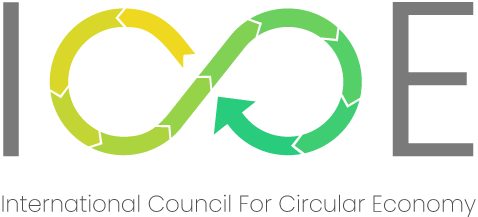
CIRCULAR ECONOMY: (RE) EMERGING MOVEMENT
The path to Sustainable Development
“The Taj Mahal is turning yellow,” was the heading that made me think- What caused it? As a child, I would often wonder how could this beautiful monument, one of the seven wonders, be impacted? Through my post-graduation, I worked on several papers and a thesis on the “Effects of Acid rain on Taj.” I learned how the marble in India’s once ivory-white mausoleum was undergoing a natural oxidation process along with pollution and acid rain which were robbing the building of its mystical sheen.
A keen interest in Environment and Ecology, in the following years, made me work on several projects both in India as well as abroad. Since the last decade, Climate change and c-footprint have been actively talked about. Each country needs to have a focused approach towards sustainable practices. Being the third-highest global emitter of Greenhouse gases, India is no different. The country is gaining momentum towards Circular practices. However, lack of visibility, right tools and connections remained a concern. I was instrumental in establishing the International Council for Circular Economy to bridge this gap by encouraging strong connections amongst the global circular economy community.
But still, the knowledge and basics of Circular Economy remained far from the reach of a common man. This is when I decided to write a book and keep it affordable for everyone. A book that talks about how circular practices could help achieve sustainability. The book aims at introducing the new concept of Circular Economy and its importance in different sectors through several case studies. The sectoral approach gives a perspective of the new approach (which is not so new for INDIA).
The book will come handy for Circular Economy practitioners, Sustainability heads, industry experts, government bodies, policymakers, academia, research, people from associated sectors, students, bilateral and multilateral organizations that are working in sustainability.
The chapter “Old wine in new bottle” is my favorite chapter. It gives a traditional Indian perspective to the comparatively newly coined term – Circular Economy. This chapter narrates the importance of “unlearning” more than learning the new concept. The book has been intentionally kept away from the technical aspects, especially for the common reader. I recommend the reader to dive into technical aspects, once the basic understanding of the concept is developed. HAPPY READING!
About the book
The book is a scholarly work on the maturing of Economies — Closed, Open, Linear and now CIRCULAR. The author elaborates on how the new concept of Circular Economy could be a resource multiplier for countries especially for India where recycling rates are one-third to that of the global average. The book advances from the linear to Circular approach divulging how scarce resources could be put to optimum utilization, to restore our planet’s harmony. Author has picked up several sectors, outlining how each could become sustainable through a loop-based approach. Several case-studies, infographics and diagrams make it easier for the reader to delve into the subject. An astute research work, the book is recommended for Circular Economy practitioners, Sustainability heads, industry experts, government bodies, policymakers, academia, research, people from associated sectors, students, bilateral and multilateral organization that are working in sustainability.
About the author
A post-graduate environmentalist Shalini has been actively working in sustainability. She developed a Zero Waste program which helps entities to reduce their Carbon-Footprint. Her ‘Project Zero’ made headlines when it was awarded by the Uttarakhand State govt. An active social worker, she has several awards that add to her laurels. She has been recognized and awarded by Social Founder; London, Global Goodwill Ambassador; the US, ICUNR; India. She is currently chairing the International Council for Circular Economy. An active speaker, she takes up initiatives in promoting educational opportunities, leadership development, entrepreneurship and empowerment of youth and women. Her first book (this) happens to be the first book on ‘Circular Economy’ in India. The book has already garnered enough attention for the author to work on her next book.



